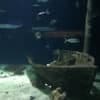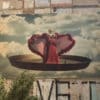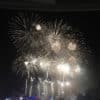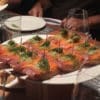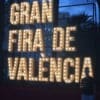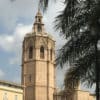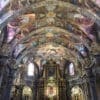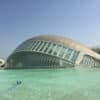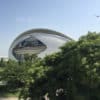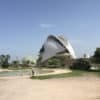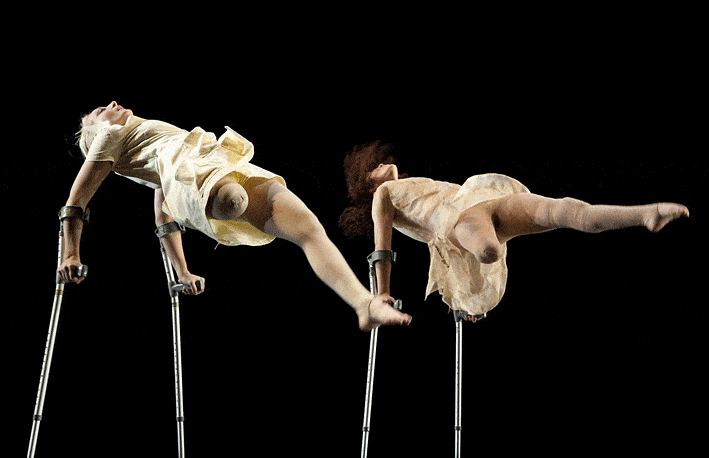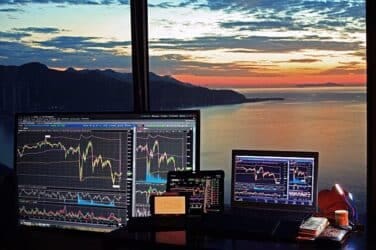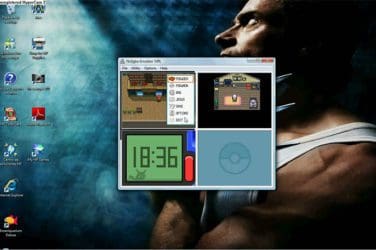A weekend in Valencia, where futurism meets gothic – words Chris Zacharia
Through the gaps in the trees, you see it: a giant helmet-shaped dome, as big as an ocean liner and surrounded by pools of bright blue water.
“Don’t worry!” announces my guide, Jose. “You’re not dreaming. You’re looking at Valencia’s famous opera house”.
It’s the latest architectural marvel in Valencia’s City of Arts and Sciences, a utopian world of bright green parks, shimmering manmade lakes and futuristic megastructures devoted to culture.
Having landed in Valencia this morning, I’ve hired a bicycle to get a feel for the city. Cycling ahead of me is Jose, a guide so friendly that by mid-afternoon I feel like I’ve known him since birth. He spends all afternoon excitedly pointing out his city’s greatest achievements, his fluffy white hair bobbing in the breeze.
Cycling transforms the 35 ℃ heat into a pleasant coolness. Valencia’s circuit of well-kept cycle paths make the bicycle an obvious choice. We’re cycling along the riverbed, an emerald ribbon which meanders east to west through the city, culminating in the City of Arts and Sciences which sit upon what was once the river’s mouth.
After a devastating flood in 1957, the authorities decided to drain the river. But when the government tried to use the river’s path as the site for a new motorway, residents were up in arms. Instead, they created a luscious green walkway, gradually decorated with public artworks and grand designs.
“This is the best way to travel, yes?” Jose smiles, as we pedal through the trees and parks. It’s impossible to disagree. The space around the river is dreamlike in its perfection, a case study in how to modernise a city without damaging its natural beauty.
Although the monolithic superstructures are eye-catching – beside the opera house, there’s the floating IMAX whose dome opens like an eyelid and the no-longer-functional tennis court ceramic dome – Valencia’s promotion of grassroots art is even more impressive. Pausing by the cinema, Jose points out silhouette heads emerging from the water, each with a different hairstyle. The one closest to us has a smattering of metal butterflies. The public can vote on the one they like best, with the winning piece being bought by the city for over €1m.
At the end of the river path stands the Oceanografic, Europe’s largest aquarium. Spanning five individual domes, shaped like enormous lilypads set upon the water, Parking our bikes out front, we’re sucked in by the promise of sharks, walruses and dolphins. Each dome represents a different body of water, from the Mediterranean Sea to the Arctic Ocean. Tunnels of water tanks allow you to walk underground from zone to zone.
We descend into a circular aquarium, the entire room suffused in aquamarine, a haunting blue turning the black forms of fish into ghosts. Sharks amble up to the glass, walruses backflip gracefully, fish coalesce into shoals. Before we know it, two or three hours have been spent strolling and gawping.
A twenty-minute cycle takes us back to the heart of the city. By the time we reach our hotel, the Sercotel Sorolla Palace, we’re famished. Situated on the fringes of the city, close to the airport and beside the motorway, Sorolla Palace isn’t exactly in the heart of the city. Nonetheless, it’s a decent base: well-appointed, comfortable and excellent value. And with the transport links so good in Valencia – there’s a metro, regular busses and cheap taxis – getting around is easy.
Goya Gallery Restaurant, in the city’s Rusafa district, is one of those restaurants where you feel in good hands. Named after Francisco Goya, the restaurant has some of the artist’s dark charm. Busts, sculptures, sketches and pop-art cover the dimly-lit walls.
We’re served traditional Valencian fare, enlivened with creative flourishes. Escalivada, a traditional open sandwich topped with creamy aioli and criss-crossed with anchovies, roasted peppers and aubergines, is a kingly snack. Then comes octopus. Rather than being served with roast potatoes, it arrives with a delicious cream of potato sauce decorated with a few shakes of paprika. Each curl of octopus is succulent and delicate, pairing with the pureed potato perfectly. By the time the dessert menus are passed around we’re much too full, opting for sorbets instead of full-bodied puddings.
The following morning we head to the old town, nicknamed El Carmen. Valencia may have an abundance of futuristic architecture, but its wealth of historical sites is arguably far more impressive. Having enjoyed its golden age in the 15th century, Valencia has inherited a remarkable flock of gothic buildings.
Entering through the 14th century Serrano towers, one of the thirteen original gates to the city, we home in on the city’s many churches. We start with the cathedral, converted from the original mosque in 1262. Inside, there are two paintings by Goya, shrouded in mysterious side-chapels; the incorruptible arm of St. Vincent the martyr, a macabre outstretched hand blackened through time; and even the holy grail, purportedly the only surviving part of the cup from which Jesus himself drank.
Dated to the 1st century, the argot cup was brought back to Rome by St. Peter, where it was kept until St. Lawrence of Huesca took it in the 3rd century. Finally, King Alfonso V gave it to the Valencian cathedral as security for a loan, where it has remained ever since. Visiting Popes John Paul II and Benedict XVI used the cup during masses when visiting Valencia, consolidating its authority. Gazing at the primitive, fist-sized chalice, the only thing I’m sure of is that it’s very old.
Opposite St. Vincent’s withered arm, there’s a picture of Mary with child which carries a local superstition. To this day, pregnant women come before the painting of the Virgin to ask her for a good birth. They then circle the church no fewer than nine times, in order to prove their devotion and seal the pact. I hang around by the painting, hoping to witness this unusual custom, but unfortunately the only ritual I see is the familiar one of tourists taking photographs.
The cathedral is not the only church with treasures. The nearby Church of St. Nicolas, a single-nave church dating from 1255, is worth visiting for the jaw-dropping ceiling alone. Nicknamed the Valencian Sistine Chapel, its vast scale makes it even more impressive than its Italian counterpart. Every inch is covered in celestial imagery, the two sides of the ceiling telling the stories of St. Peter and St. Nicholas respectively. Having recently reopened after a painstaking five-year restoration, it’s absolutely breathtaking.
San Juan del Hospital is the oldest church in Valencia, and its original 14th century paintings are a testament to its age. After being redecorated in a flamboyant Baroque style, like many other churches in Valencia the Baroque fixings were controversially removed in order to restore the churches to their original designs. With its spooky Medieval charm, San Juan del Hospital certainly benefits from this.
It’s easy to assume that Valencia’s story ended with the passing of its Gothic golden age. But Valencia’s modern history is just as tumultuous. In 1936, Valencia became the capital of Republican Spain during the Spanish Civil War, in opposition to the fascist General Franco and the Catholic church. Bombas Gens is a reminder of this violent period. A former water pump factory, Bombas Gens takes its name from its wartime conversion into a munitions factory. The site fell into dereliction in the early 90s, but has now been converted into an artistic and cultural centre, featuring a permanent exhibition telling the story of the factory and its workers, temporary exhibits of postmodern art and an authentic Civil War bomb shelter. We explore the cavern in hushed silence, our footsteps echoing in the chambers.
Valencia is a city that is both proud of its heritage and with a strong sense of popular power. During the afternoon, we experience a more ephemeral and democratic form of creative expression through the city’s street art. We’re shown a mixture of tagging and murals, sometimes hidden behind post-boxes or behind fences, and sometimes covering entire building fronts, looming over the roads.
It’s a mixed bag, but the ephemeral nature of the art gives it an edge of excitement – after all, these images could be replaced at any moment. We see a biting critique of the city’s housing crisis featuring a popular civil rights lawyer, romantic murals of kissing couples and a miniature house for cats painted over a gutter.
The tour culminates in the Contemporary Art Museum, which takes many of these themes indoors. We meet Vince Feel Free, a passionate, vivacious young artist who carries a mask with him at all times to preserve his anonymity. Politely putting our smartphone cameras away, Vince shows us his remarkable exhibition centred around the ancient sport of pelotas.
Naked players are transfixed in poses of competition, their heads cleverly replaced by those of animals to “increase empathy and decrease judgement”. Each room shows a different stage of the sporting journey, from preparation to fan culture to victory and defeat, with Vince explaining how he painted the animal heads on top of photographs to create a striking and surreal blend of reality and imagination. In a city not short of artistic marvels, Vince’s unusual take on pelotas is possibly the most memorable artistic statement we encounter.
Art might leave you feeling exhilarated, but it also leaves you famished. Orio, which serves traditional Basque pinchos with a Valencian spin, proves to be an excellent place to rejuvenate. Our table is down in the cellars, where glass floors show off the illuminated Arabic ruins underneath.
Meanwhile, what’s on the table is just as impressive: platters piled with pinchos heaped with jamón serrano, crab and anchovy salad, chunks of beef partnered with red pepper and parsley, Basque sausage Chistora, swirling creamy pâté. Although you end up eating a whole baguette, the pinchos are delicious bite-size ambassadors of the Spanish culinary imagination. A platter of chorizo, fuet and incredible Cecina de Baja jamon, with its sweet, honey-like taste, completes an excellent spread.
That night, we’re treated to the Gran Fira de Valencia, a culture festival featuring outdoor music, art displays and firework shows – not forgetting street food, of course. From the countless stalls surrounding one of the city’s many squares, we load up on tempranillo, goat’s cheese and chorizo from local vendors, slowly watching the last beams of light vanish from the flagstones.
As the sun sets, we head down to the seafront in a taxi. The rooftop of the Marina Beach Club restaurant provides the perfect platform from which to admire the Gran Fira fireworks display. A ten-second countdown introduces the show, which takes a full twenty minutes before subsiding, the night sky thick and misted with smoke.
It’s a fittingly colourful way to end our visit to vibrant Valencia.
To plan your visit to the city of Valencia, go to www.visitvalencia.com for further information on the city.
A weekend in Valencia, where futurism meets gothic – words Chris Zacharia


